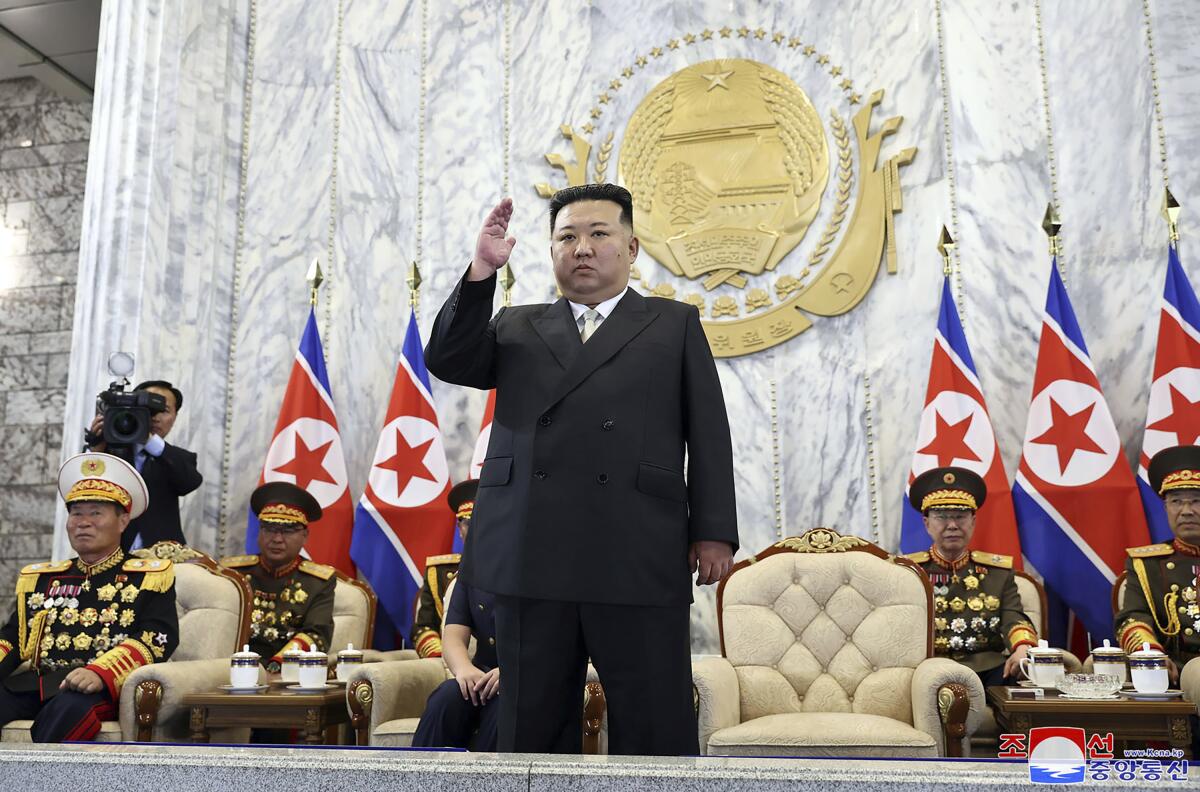North Korea's Kim Jong Un Visits China for Military Parade
North Korean leader Kim Jong Un traveled to Beijing to join Chinese President Xi Jinping and Russian President Vladimir Putin for a major military parade marking the 80th anniversary of Japan's surrender in World War II.

North Korean leader Kim Jong Un arrived in Beijing on his signature armored train to attend a massive military parade at the invitation of Chinese President Xi Jinping. The parade, held on the 80th anniversary of Japan’s World War II surrender, also featured Russian President Vladimir Putin and brought together dignitaries from more than two dozen countries in a high-profile display of military might and political alignment.
Geopolitical Symbolism and Trilateral Dynamics
The event marks the first time Kim has participated in a multilateral summit of this scale, and the first public gathering of all three leaders—Xi, Putin, and Kim—since Kim took power 14 years ago. Their joint appearance is widely interpreted by analysts as a calculated demonstration of solidarity against the United States and its allies, with some commentators dubbing the trio an "Axis of Upheaval." The parade, which showcased China’s latest hypersonic missiles, drones, and tens of thousands of troops, was designed to project not just military strength but also a united front among some of the world’s most heavily sanctioned regimes.
The presence of Kim, Putin, and Xi together comes as Western governments accuse North Korea of supplying ammunition and troops to aid Russia’s war effort in Ukraine, while China is seen as Moscow’s primary economic and logistical supporter. According to South Korean intelligence, North Korea has sent approximately 15,000 troops to Russia, deepening the military and economic interdependence between Pyongyang and Moscow. China, for its part, remains North Korea’s largest trading partner and a critical source of humanitarian aid.
Diplomatic Maneuvering and Strategic Intentions
Kim’s visit is not only symbolic but also strategic. He is expected to hold bilateral meetings with both Xi and Putin on the sidelines of the parade, aiming to further cement North Korea’s relationships with its two most powerful neighbors. The North Korean leader reportedly stopped en route to Beijing to inspect a missile research institute developing a new engine for a next-generation intercontinental ballistic missile (ICBM), underscoring Pyongyang’s ongoing commitment to advancing its nuclear capabilities.
While the Chinese and Russian governments have not confirmed a private trilateral summit, Kremlin officials indicated that a meeting between Putin and Kim was "under consideration," with both leaders expected to discuss military and economic cooperation. For Kim, the parade offers a rare opportunity to break out of diplomatic isolation and seek new avenues for economic assistance and technological collaboration, particularly as North Korea’s relations with China have reportedly cooled in recent years.
International Reactions and Broader Implications
The high-profile assembly of leaders in Beijing has drawn sharp criticism from Western governments and heightened concerns about the growing alignment among authoritarian states. The parade, with its overt demonstrations of advanced weaponry and military hardware, sent a clear message of defiance to the U.S.-led international order. Security in Beijing was exceptionally tight, with all buildings along the parade route locked down and at least 50,000 spectators in attendance.
The event also served as a platform for Xi Jinping to assert China’s global ambitions and its willingness to challenge the prevailing geopolitical balance. For Putin, the gathering provided a venue to reinforce Russia’s alliances as it faces increasing isolation over the war in Ukraine. Kim, meanwhile, leveraged the occasion to showcase North Korea’s strategic relevance and to pursue deeper engagement with both Beijing and Moscow.